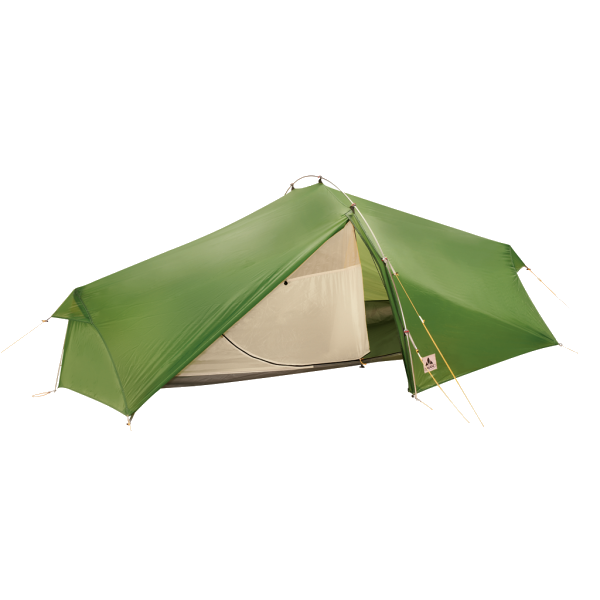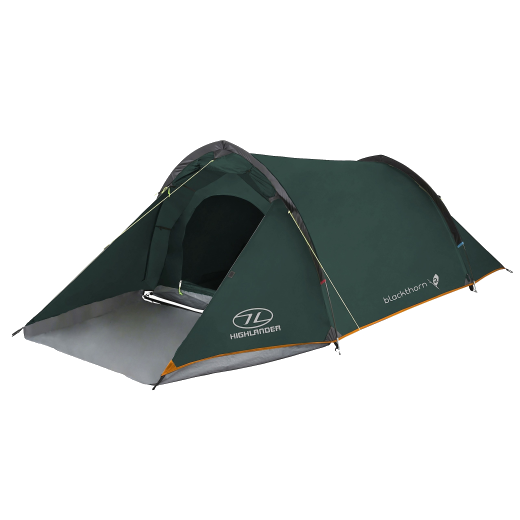Backpacking Tents (Your Home)
Home away from home, that is what a tent is. Tents come in a variety of shapes and sizes, flashy colors and shiny zippers. Don't let all this fool you, it is still a tent. Sizes are based  according to how many people they sleep: 2-man, 3-man, 4-man, even 6-man. If the tent is made by a reputable company it will usually sleep what the company says it can. However some tent companies overrate their tents—and most do not include stowed gear—so a 3-man can, in reality, only comfortably sleep 2. Backpacking tents are usually no larger than a 2-man and made of lighter materials. Tents can be separated the parts divided by the weight equally among the partners who will be sharing the tent once in camp.
according to how many people they sleep: 2-man, 3-man, 4-man, even 6-man. If the tent is made by a reputable company it will usually sleep what the company says it can. However some tent companies overrate their tents—and most do not include stowed gear—so a 3-man can, in reality, only comfortably sleep 2. Backpacking tents are usually no larger than a 2-man and made of lighter materials. Tents can be separated the parts divided by the weight equally among the partners who will be sharing the tent once in camp.
What's in a Season?
You may hear tents categorized as 3-season or 4-season. A 3-season tent is generally made for camping in warmer months, spring through fall. A 4-season tent is made to go  camping year round, even in the winter. The main difference in the two is that 4-season tents are made of heavier material and the rain fly covers virtually every exposed portion of the tent which helps to keep the inside of the tent warmer. In the heat of summer though, you would be more comfortable in a 3-season tent than a 4-season one.
camping year round, even in the winter. The main difference in the two is that 4-season tents are made of heavier material and the rain fly covers virtually every exposed portion of the tent which helps to keep the inside of the tent warmer. In the heat of summer though, you would be more comfortable in a 3-season tent than a 4-season one.
Tent Structure
The make up of a tent is quite simple: the support, the main tent, and the rain fly. The support is just a bunch of poles that keep the rest of the tent up. Companies are now trying to  increase the ease of putting up a tent by permanently attaching the poles to the main tent. This helps in that you don't lose your poles, and all you have to do to set up the tent is connect the poles. The main part of the tent is what you will sleep in, so keep this part clean and dry. The rain fly is just a light piece of tent fabric that covers the tent and keeps it dry in the rain. The key to keeping the tent dry is to once you have put the rain fly on, try to stretch the fly out. This will keep the fly from touching the tent. If the fly does touch the tent, rain can seep through the fly, onto the tent, and into your bedroom.
increase the ease of putting up a tent by permanently attaching the poles to the main tent. This helps in that you don't lose your poles, and all you have to do to set up the tent is connect the poles. The main part of the tent is what you will sleep in, so keep this part clean and dry. The rain fly is just a light piece of tent fabric that covers the tent and keeps it dry in the rain. The key to keeping the tent dry is to once you have put the rain fly on, try to stretch the fly out. This will keep the fly from touching the tent. If the fly does touch the tent, rain can seep through the fly, onto the tent, and into your bedroom.
Ground Cloths
The last piece of information about tents is a ground cloth. This tarp goes  underneath the tent and keeps the tent dry and clean by separating it from the ground beneath it. Once you have the tent set up on top of the ground cloth, roll up and tuck in the edges of the cloth that stick out from beneath the tent. This will help in keeping everything dry, otherwise the edges of the ground cloth can act as little water gutters and direct the rain right under your tent.
underneath the tent and keeps the tent dry and clean by separating it from the ground beneath it. Once you have the tent set up on top of the ground cloth, roll up and tuck in the edges of the cloth that stick out from beneath the tent. This will help in keeping everything dry, otherwise the edges of the ground cloth can act as little water gutters and direct the rain right under your tent.
 according to how many people they sleep: 2-man, 3-man, 4-man, even 6-man. If the tent is made by a reputable company it will usually sleep what the company says it can. However some tent companies overrate their tents—and most do not include stowed gear—so a 3-man can, in reality, only comfortably sleep 2. Backpacking tents are usually no larger than a 2-man and made of lighter materials. Tents can be separated the parts divided by the weight equally among the partners who will be sharing the tent once in camp.
according to how many people they sleep: 2-man, 3-man, 4-man, even 6-man. If the tent is made by a reputable company it will usually sleep what the company says it can. However some tent companies overrate their tents—and most do not include stowed gear—so a 3-man can, in reality, only comfortably sleep 2. Backpacking tents are usually no larger than a 2-man and made of lighter materials. Tents can be separated the parts divided by the weight equally among the partners who will be sharing the tent once in camp.
 camping year round, even in the winter. The main difference in the two is that 4-season tents are made of heavier material and the rain fly covers virtually every exposed portion of the tent which helps to keep the inside of the tent warmer. In the heat of summer though, you would be more comfortable in a 3-season tent than a 4-season one.
camping year round, even in the winter. The main difference in the two is that 4-season tents are made of heavier material and the rain fly covers virtually every exposed portion of the tent which helps to keep the inside of the tent warmer. In the heat of summer though, you would be more comfortable in a 3-season tent than a 4-season one.
 increase the ease of putting up a tent by permanently attaching the poles to the main tent. This helps in that you don't lose your poles, and all you have to do to set up the tent is connect the poles. The main part of the tent is what you will sleep in,
increase the ease of putting up a tent by permanently attaching the poles to the main tent. This helps in that you don't lose your poles, and all you have to do to set up the tent is connect the poles. The main part of the tent is what you will sleep in,  underneath the tent and keeps the tent dry and clean by separating it from the ground beneath it. Once you have the tent set up on top of the ground cloth, roll up and tuck in the edges of the cloth that stick out from beneath the tent. This will help in keeping everything dry, otherwise the edges of the ground cloth can act as little water gutters and direct the rain right under your tent.
underneath the tent and keeps the tent dry and clean by separating it from the ground beneath it. Once you have the tent set up on top of the ground cloth, roll up and tuck in the edges of the cloth that stick out from beneath the tent. This will help in keeping everything dry, otherwise the edges of the ground cloth can act as little water gutters and direct the rain right under your tent.